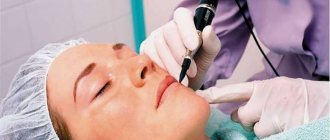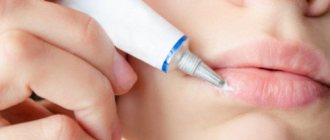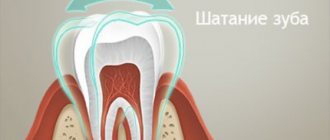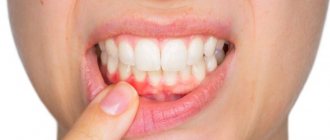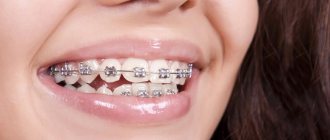The remedy for Fordyce granules is an effective treatment option for neoplasms that appear on the skin of the human body. The phenomenon of seborrheic cysts is quite common, and for the most part does not cause concern among its owners. Nevertheless, for some people they become an acute problem, and all possible methods are selected to get rid of this phenomenon. Patients are looking for a method that will help get rid of Fordyce granules without causing harm to health.
Features of Fordyce granules
Fordyce granules look like small compactions - nodules, the size of which does not exceed 2 millimeters and a height of 1 millimeter. They have a light, flesh-colored or white color. They are located mainly in groups of several dozen specimens. Formations can be seen on the nipples of women, in the genital and anal areas, in the armpits and on the face. This anomaly affects about 35% of people, mostly women. When such a granule is squeezed, a curd mass may come out of it, white or yellow in color with a specific odor.
The presence of granules is almost unnoticeable. They do not cause pain, and the discomfort of their presence is completely eliminated.
Many experts consider such neoplasms to be an absolutely normal phenomenon. The reasons for their occurrence are associated with the abnormal location of the sebaceous glands, which is considered completely acceptable or normal.
The growths do not cause physical discomfort to a person. The desire to get rid of granules is associated with psychological discomfort due to the ugliness of the skin. The formations are not prone to complications, transmission to another person is excluded.
The appearance of granules can occur due to:
- stress;
- poor nutrition;
- bad habits;
- environmental impact.
The appearance of granules is observed during the period of hormonal changes in the body. Vulnerable periods are puberty and pregnancy. Often the granules dissolve on their own, without any intervention.
Fordyce granules
Fordyce granules are hyperplastic sebaceous glands that tend to form in those areas of the body where the skin is thinnest and most delicate. Most often they are localized on the mucous membranes of the oral cavity (in particular on the cheeks), on the lips, in the groin, directly on the genitals and on the nipples. Such changes in the sebaceous glands were first described by the American dermatologist and syphilidologist John Addison Fordyce back in 1896. Hence the name that has now become generally accepted for them - Fordyce granules. Formations are considered one of the variants of the physiological norm, since they are: completely benign; do not harm health; are not accompanied by unpleasant symptoms; are not transmitted during sexual contact or any other way. That is why patients turn to specialized medical institutions only in cases where visible sebaceous glands represent a serious cosmetic defect and become a reason for a person’s dissatisfaction with their appearance. The exact reasons that provoke changes in the sebaceous glands have not been identified at the moment. However, most doctors, based on the results of pathomorphological studies of tissues, believe that the prerequisite for the occurrence of cysts are various types of congenital disorders of the development of the sebaceous glands, leading to their displacement into the upper layer of the skin or to a change in their normal location (the location of the sebaceous glands in the area of the border of the lips is considered abnormal , on the mucous membranes of the oral cavity, etc.). Another cause of Fordyce granules is considered to be hyperplasia of the excretory ducts of the sebaceous glands, which provokes the appearance of cystic formations in them. Simply put, Fordyce granules develop in people who have excessive narrowing or blockage of the excretory ducts of the glands, accompanied by the accumulation of secretions (sebum) in them. Sebaceous gland cysts first appear in humans during adolescence, when the process of puberty begins, that is, approximately in the range from 13 to 17 years. Thus, it can be assumed that the process of formation of Fordyce granules proceeds in accordance with the following algorithm: during the period of intrauterine development in the fetus, for one reason or another, the formation of the sebaceous glands is disrupted; when the child reaches a certain age, under the influence of steroid hormones that are produced by the sex glands (the so-called androgen hormones), the glands begin to increase in size and actively produce sebum, which results in their visualization.
Characteristic features of Fordyce granules. Externally, sebaceous gland cysts resemble small nodules (or papules) the size of a millet grain. As a rule, such rashes are numerous, widespread and not accompanied by pain (either at rest or when pressing on them). When pressing on the formation, in some cases a very small amount of liquid may be released from it, having a white-yellow tint and a rather thick consistency. However, more often than not, attempts to squeeze the contents out of Fordyce granules end in pinpoint bleeding and the development of hematomas in the area of skin surrounding the damaged papule.
Doctors are categorical in their prohibitions on self-removal of Fordyce granules, since this, firstly, is very painful, and secondly, provokes inflammatory processes and scarring of the skin. This is especially true in cases where the cysts are localized in the lip border area. Fordyce granules on the lips in the vast majority of cases (up to 90%) occur in women. This type of Fordyce granules occurs as a result of damage to the apocrine sweat glands, which are somewhat associated with the genitourinary system.
Treatment of Fordyce granules. Unfortunately, there are currently no effective methods for treating Fordyce granules. The use of jojoba oil and vitamin A is recommended as a means to inhibit further development of the process. These products help remove Fordyce granules that are already present and prevent the formation of new ones. Such drugs can act mainly on fresh cysts.
The main methods of removal are electrocoagulation or cryotherapy. Treatment of large Fordyce granules, as well as formations classified as old, is carried out through their surgical removal. The decision on the possible removal of certain elements is made by the attending physician. In this case, the skin over the papule is opened, the wen itself is peeled off, and the bleeding is stopped using an electrocoagulant. The edges of the operated area are sutured with special materials.
Pustovoitova E.V.
Types of treatments
Treatment is not a necessary measure in this matter. Nevertheless, for many people it becomes relevant, as it causes many complexes about the appearance of the body.
Ointments
The most popular remedy for combating Fordyce's disease is Retin A ointment. The drug affects the secretion of the sebaceous glands and dissolves the formations that have arisen. Trans-retinoic acid, which is part of the ointment, neutralizes the contents of sebaceous plugs and regenerates skin tissue. You need to apply the cream once a day, preferably in the evening, before bed. It is important to avoid contact of the substance with the eyes and mucous membranes of the body. After 6 hours, it must be washed off with running water. The first effects are observed after 2-3 weeks. The full course of treatment lasts up to 2 months. Analogs of the cream drug Airol and Lokacid.
Removal by devices
New growths can be removed by performing an instrument procedure. Modern medicine offers many options for removing skin defects in a hospital setting:
- Cryodestruction - granules are frozen with liquid nitrogen. A special device is applied to the affected area for a few seconds. After this, the growth begins to collapse and dies.
- Laser removal is the most popular. It occurs under the influence of a special laser beam, which burns out the growth layer by layer. Removing Fordyce granules with this laser takes several minutes.
- Electrocoagulation – neutralization of the cyst occurs using high frequency electric current. The current energy accumulates in the tip, after which it evaporates the liquid from the tissues of the growth. Thanks to the method, elimination takes place without blood loss.
- The radio wave method is the most gentle. Excision is carried out by exposure to high-frequency waves that cut off the formation. Moreover, at this moment there is no contact between the device and the tissues.
We recommend reading:
- How to get rid of warts on the neck
- Is it possible to cauterize condylomas?
- Features of the appearance of a wen on the scrotum
Medications
Treatment of cysts is carried out without the use of various medications. In special cases, your doctor may recommend taking anti-inflammatory drugs or antibiotics to prevent bacterial infection. The selection of medications is solely at the discretion of the doctor, depending on the symptoms of the disease and the characteristics of the patient.
Removing Fordyce Granules
Reasons for appearance
Fordyce granules can appear in completely healthy people, but are more often found in those who have a number of predisposing factors such as:
- Seborrhea, oily skin;
- Puberty;
- Increased production of male sex hormones in women;
- Metabolic disorders (high cholesterol, liver disease).
Favorite localization in the area of the labia minora and majora in women, on the penis and scrotum in men, in the transition zone of the oral mucosa and lips. In this area, the skin is thin and contains virtually no subcutaneous fat, so the enlarged sebaceous glands are clearly visible and palpable.
Symptoms
Fordyce granules do not cause any discomfort to those who develop them. There is no pain when touching, having sexual intercourse, or eating food. The patient accidentally discovers a rash and this becomes the reason for visiting a doctor. It is not the aesthetic appearance that makes you see a doctor.
The size of the enlarged sebaceous glands can change, decrease, increase, or unite, thereby changing the appearance.
Diagnostics
To make a diagnosis, a visual examination by a specialist is sufficient. Additionally, it may be recommended to take tests for:
- Total cholesterol (lipid profile);
- Total testosterone, androstinone;
- Basic biochemical parameters (ALT, AST, bilirubin, creatinine).
To prevent the appearance of new rashes when a metabolic disorder is detected, a correction is prescribed.
Removing Fordyce Granules
Several techniques are used to remove enlarged sebaceous glands:
- Electrocoagulation (exposure to electric current causes local burning of tissue);
- Laser removal (laser beam entering the surface layers of the dermis causes evaporation and destruction of tissue);
- Radio wave therapy (radio waves, when touching tissues, cause point coagulation).
The priority method is surgical laser, as it has a number of advantages:
- During removal, the surrounding tissues are not damaged, the laser precisely affects the lesion;
- After removal, it does not leave marks on the skin and mucous membranes, which is important when working on the face and intimate area;
- A shorter period of tissue regeneration, the healing period is 3-7 days shorter than with other methods of exposure;
- Non-contact influence.
Care after removal
- For the first 24 hours, do not wet the area affected by the laser beam;
- Protect the resulting crusts and do not tear them off; they will fall off on their own after 7 days;
- Avoid baths, saunas, and swimming pools for 14 days;
- If the removal was in the intimate area, underwear can be worn only from cotton fabrics, loose, so as not to rub the skin.
How does a cosmetologist remove it?
In addition to standard clinical treatment methods, a person with rashes can be treated at home, or seek the help of a cosmetologist.
After a diagnostic examination, the cosmetologist can select one of the most suitable methods. Most often, for such a problem, treatment with the Darsonval apparatus is used or permanent makeup is applied.
The use of Darsonval allows you to cleanse the skin, saturate it with oxygen and restore natural metabolic processes in tissues. The sebaceous department is normalized. The skin becomes more pleasant and smooth to the touch. In this case, the course of treatment will be about 10 sessions. During the procedure, the specialist installs the necessary attachment – an electrode – into the device holder. After this, light movements massage the skin. Unfortunately, cosmetologists do not give a 100% guarantee of an effective outcome. A similar procedure can also be carried out at home.
Permanent makeup is used for minor tissue damage. Especially if the growths are on the lips. To do this, a special pigment is introduced into the required area, which colors the granules that stand out in color. Tissue tattooing takes place. The result of the procedure lasts for 1-2 years, after which the event must be repeated.
Fordyce granules. What is this?
Many people have them, almost everyone, but rarely does anyone notice these granules on their face until…. until we had lip contouring done!
What a strange name?
Fordyce granules or otherwise called seborrheic cysts are sebaceous glands on the skin. Their strange name comes from the name of the scientist JA Fordyce who described these cysts back in 1896.
What are these Fordyce granules?
Fordyce granules look like small (1-2 mm) spots and papules (small nodules) of white or yellowish color. They are painless and numerous. These are sebaceous glands, which in some people are located ectopically (closer than normal to the upper layer of the epidermis). Locations: in the lip area, on the border of the lips, on the mucous membrane of the mouth, on the nipples, in the groin, on the labia.
Fordyce granules - are they dangerous?...
No. They do not cause harm to human health. They are not transmitted through any type of contact (including sexual contact). They are considered a type of NORM.
Why do you need to know about Fordyce granules?
I decided to write about these granules because when performing lip contouring I often come across the fact that the client did NOT notice them on herself until her lips were “done.” During the procedure, the volume of the lips is filled and some tension of the skin occurs, during which the granules become more clearly visible. In addition, the desire to consider the result of the procedure forces the client to more carefully and thoroughly examine her lips in great detail..... And then panic begins and a lot of speculation begins, such as:
- Is this a complication from contour plastic surgery?
- Is this an allergy to the filler?
- is this oncology?
- is this an introduced infection?
And similar assumptions that force us to open the “worldwide storehouse of knowledge” - the women's Internet forum - and look for answers there. And there, like on a fence, everything is written in a row. Therefore, to warn you, I decided to write about a “problem” that does not exist. PS Once again, my dear alarmists! THIS IS THE NORM. Take this advice as a guide to action: before you get lip contouring, examine your lips carefully. Better yet, take pictures of them yourself (in addition to my photo protocol before and after the procedure).
Is it possible to remove/cure the granules?
In medicine, this problem has been studied very little. Currently, information about the successful treatment of Fordyce granules is very contradictory and unconfirmed. No effective treatment has been proposed. Often, they go away spontaneously by the age of 30-40. Most granules lose their convexity and color with age and become less noticeable. This is due to the extinction of the activity of the sebaceous glands and a decrease in the level of sex hormones. Radical removal of granules using aggressive techniques (laser cauterization, electrocoagulation, cryotherapy, etc.) can lead to the formation of inflammation and further scarring of the skin. NB Take the presence of such granules as a highlight and don’t get hung up on it. Most likely (if you haven’t noticed them in yourself), then no one else will notice them in you either. I wish you impeccable beauty, my perfectionists! At home, it is possible to use jojoba oil, which removes fresh granules and prevents the formation of new granules...
Cost of removal of Fordyce's angiokeratoma
| Cost of laser removal | price, rub. |
| Removal of Fordyce's angiokeratoma with CO2 laser (taking into account application and infiltrative anesthesia) | 7 900 |
| Removal of Fordyce granules with CO2 laser (taking into account application and infiltrative anesthesia) | 7 900 |
| Removal of an epidermal cyst | 5 000 |
Make an appointment for Fordyce angiokeratoma removal
- Full name
- Telephone
Description and symptoms of angiokeratoma
Angiokeratomas have many varieties and are divided into groups of diseases. One of them is Fordyce's disease, described by a researcher 120 years ago. The genetics of the formations have not been clarified, although it is known that they are caused by a developmental defect.
Most often, men, not women, face the problem. According to statistics, angiokeratomas of the labia are less common than angiokeratomas of the scrotum or penis. The first manifestations of the disease usually occur in adulthood, although there are exceptions.
What are the symptoms and features of the disease? The latter manifests itself in the form of small brown-red nodules. The skin underneath remains smooth. When rubbed, angiokeratomas of the thighs, vulva, penis or scrotum may bleed. Possible damage to the sebaceous glands, nipples, and oral mucosa.
The disease is not dangerous to the patient's health. Typically, benign formations that arise are removed only for aesthetic purposes. Therefore, this disease should not be confused with seborrhea, focal eczema, neurodermatitis, or, for example, molluscum contagiosum.
Treatment of Fordyce's angiokeratomas
Currently, various methods for removing such pathologies are used, but none of the methods has proven to be 100% effective. This is mainly due to the fact that the clinical causes of the disease have not been clarified.
To remove angiokeratomas of the thighs, vulva, penis, scrotum, the following can be used:
- Retin-A;
- Jojoba oil;
- Electrocoagulation (removal of formations by electric current),
- Cryotherapy;
- Laser application;
- Use of liquid nitrogen (cryodestruction).
Under no circumstances should you squeeze out angiokeratomas or treat them yourself! Any procedures can be carried out only after consultation with an experienced dermatologist and tests.
Laser therapy for Fordyce's angiokeratosis
For limited (mild) forms of the disease, laser treatment is the best treatment. Photons not only remove Fordyce angiokeratomas, but also trigger many important processes. At the same time, the elasticity of the skin membrane is maintained, microcirculation of the blood flow is normalized, and tissues are regenerated.
Usually, laser therapy allows you to get rid of angiokeratomas completely, unless, of course, the area of skin damage is too extensive and the disease is not chronic and hereditary. The duration of laser treatment is minimal, and the results are immediate.
If you are interested in removal of Fordyce angiokeratoma, you can make an appointment with one of the Center’s specialists by phone
